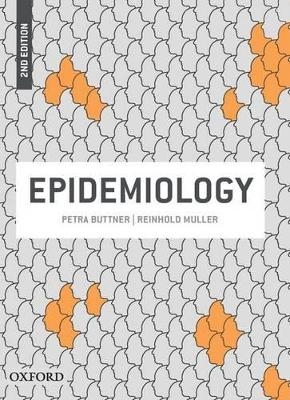
Epidemiology
OUP Australia and New Zealand (Verlag)
978-0-19-559731-8 (ISBN)
The book follows a two level 'methods based' approach which clearly differentiates between introductory knowledge that all students of epidemiology should be familiar with and 'beyond the basics' information for the interested or more advanced reader. Each chapter includes tips, key definitions and critical thinking exercises to help readers engage with key concepts and extend their knowledge of epidemiological methodologies.
Petra Buettner is a Director of Tropical Health Solutions Pty Ltd (formerly at James Cook University) Reinhold Muller is a Director of Tropical Health Solutions Pty Ltd (formerly at James Cook University)
1. What is Epidemiology? Key learning objectivesKey termsIntroductionDefining epidemiologyClassification of epidemiologyFurther classifications of epidemiologyThe epidemiological processA brief history of epidemiologyExamples of major achievements in public health through epidemiologySummaryFurther readingWebsitesBibliographyAnswers to critical thinking exercises2. Disease Concepts in Epidemiology Key learning objectives 36Key terms 36Introduction 37The natural history of disease 38Aetiology of disease 42An epidemiological approach to causality 46Infectious disease conceptsThe epidemiological triangle: Agent-host-environmentSome basic concepts used in infectious disease epidemiologyInvestigation of an infectious disease outbreakModelling infectious diseasesSummary 79Further reading 79Websites 80Bibliography 80Answers to critical thinking exercises3. Identification of Disease - Diagnostic Tests and ScreeningKey learning objectives 90Key terms 90Introduction 91Quality measures of diagnostic tests 92Assessing reliability of diagnostic tests 93Assessing validity of diagnostic tests 97How to calculate predictive values from sensitivity and specificity 101Dependence of predictive values on prevalence 103Receiver operating characteristics: Optimising cut-off points 105Screening for diseaseSummary 115Further reading 115Websites 116Bibliography 116Answers to critical thinking exercises 4. Measures of Disease Frequency Key learning objectives 121Key terms 121IntroductionPrevalence 123IncidenceRelationship between prevalence and incidence 137Standardisation of ratesSummary 147Further reading 147Websites 147Bibliography 147Answers to critical thinking exercises5. From Research Topic to Research HypothesisKey learning objectives 153Key terms 153How do you choose a research topic? 154The literature reviewSome practical tips on conducting a literature reviewThe operational research hypothesis 169Summary 173Further reading 173Websites 173Bibliography 174Answers to critical thinking exercises 6. Quantitative Descriptive Study DesignsKey learning objectives 177Key terms 177What are quantitative descriptive studies?Descriptive epidemiology by person, place, and timeRoutine health statistics: An initial source of descriptive dataLimitations of routinely collected health dataVital statistics 195Gaining access to routinely collected data 199Ecological (correlation) studiesCase report and case series 207Descriptive cross-sectional studiesSummary 212Further reading 213Websites 213Bibliography 213Answers to critical thinking exercises 7. Experimental DesignsKey learning objectives 222Key terms 223What defines an experimental study? 223Design options for experimental studiesTechnical aspects of experimental studiesSummary 258Further reading 259Websites 259Bibliography 259Answers to critical thinking exercises 8. Observational DesignsKey learning objectives 267Key terms 267What defines an observational study? 268Directionality and timingThe three basic observational study designsMeasures of associationOther observational study designs 314Summary 317Further reading 317Bibliography 318Answers to critical thinking exercises 9. Sources of BiasKey learning objectives 329Key terms 329The concept of bias 330Selection biasInformation biasConfounding biasControl of bias 368Direction of bias 371Summary 375Further reading 376Bibliography 376Answers to critical thinking exercises10. Sampling Strategy and Sample Size Calculation Key learning objectives 385Key terms 385Introduction 386Sampling strategySample size calculationSummary 402Further reading 403Websites 403Bibliography 403Answers to critical thinking exercises11. Quantitative Methods of Data CollectionKey learning objectives 409Key terms 409Introduction 410ObservationsInterviewsQuestionnariesThe format of responsesValidated instruments 431What can go wrong with data collection?Summary 435Further reading 435Websites 436Bibliography 436Answers to critical thinking exercises 12. Statistics with ConfidenceKey learning objectives 443Key terms 443Why statistics? 444Types of quantitative data 445Descriptive statisticsInferential statistics 452Confidence intervalStatistical hypothesis testingThe pitfalls of agreement and equivalence 470Multivariable statistical analysisThe use of computer programs for data analysis 478Summary 479Further reading 480Websites 480Bibliography 481Answers to critical thinking exercises 13. Ethical ConsiderationsKey learning objectives 490Key terms 490What is ethics? 491A historical perspective of ethics in health research 492Principles of biomedical ethicsFurther ethical issues in health researchHealth research conducted in Aboriginal and Torres Strait Islander peoples 509Scientific misconduct 511Ethical theory and public healthSummary 517Further reading 517Websites 517Bibliography 518Answers to critical thinking exercises 14. How to Read and Write Scientific PublicationsKey learning objectives 525Key terms 525IntroductionThe structure of a scientific publicationGuidelines for writing scientific articles 531Technical aspects of publishing a scientific articleHow to read a scientific publicationSummary 556Further reading 556Websites 556Bibliography
| Erscheint lt. Verlag | 7.10.2015 |
|---|---|
| Verlagsort | Melbourne |
| Sprache | englisch |
| Maße | 194 x 255 mm |
| Gewicht | 1268 g |
| Themenwelt | Studium ► Querschnittsbereiche ► Epidemiologie / Med. Biometrie |
| Studium ► Querschnittsbereiche ► Prävention / Gesundheitsförderung | |
| ISBN-10 | 0-19-559731-1 / 0195597311 |
| ISBN-13 | 978-0-19-559731-8 / 9780195597318 |
| Zustand | Neuware |
| Haben Sie eine Frage zum Produkt? |
aus dem Bereich


